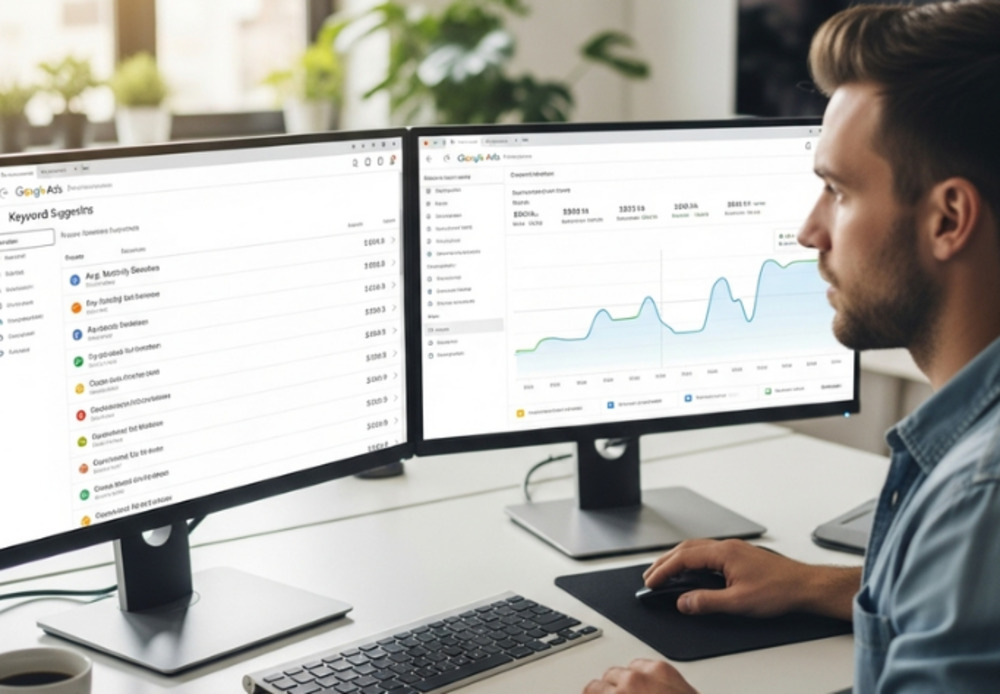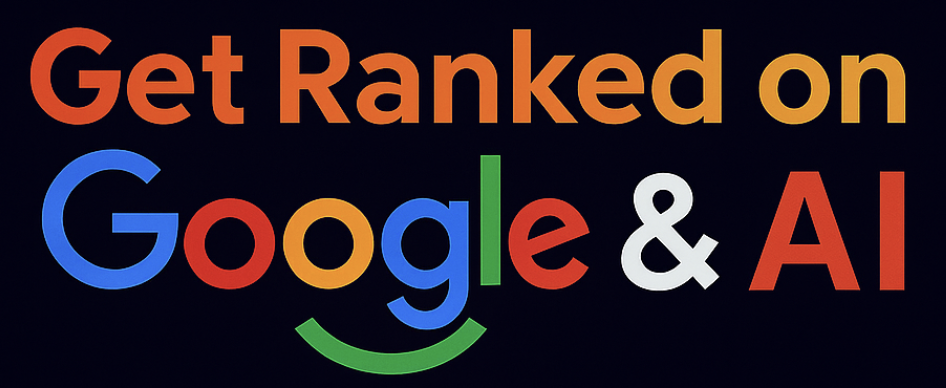Do you think your Google Ads campaign is underperforming because you haven’t found the perfect keywords?
While keywords are important, they comprise only a small part of Google ad ranking.
The real drivers of ad rank success are hiding beneath the surface, quietly determining whether your ads soar to the top positions or get buried on page two.
Today’s algorithm considers dozens of hidden signals that can make or break your campaign performance. Let’s uncover these game-changing factors that separate winning advertisers from those struggling with low ad rank.
Unpacking Ad Rank vs. Organic Ranking: A Head-to-Head Analysis

Before diving into hidden factors, let’s clear up a common misconception. Ad rank in Google Ads operates differently from organic search results, though they share surprising similarities.
1. The Google Ad Rank Formula
The basic ad rank formula follows this structure:
Ad Rank = Bid Amount × Quality Score + Ad Extensions Impact
However, the actual ad rank calculation is far more nuanced. Google considers:
- Your maximum CPC bid
- Quality score components
- Ad extensions and formats
- Search context and competition
- User signals and behaviour patterns
By using this formula, you can boost up your low ad rank in a short span of time.
If this feels overwhelming, don’t worry , starting with the fundamentals of how to setup Google Ads gives you the right foundation before optimising for ranking factors
Want experts to manage these complex ranking factors for you? Our Google Ads services in Malaysia ensure every campaign is optimised for maximum ROI
2. Key Differences from Organic Rankings
It’s important to understand the differences between the ad rank and SEO ranking.
| Google Ads Ad Rank | Organic SEO Ranking |
| Bid amount influences position | No direct payment for position |
| Immediate visibility possible | Takes months to rank |
| Quality score heavily weighted | Content authority matters most |
| Ad extensions boost performance | Schema markup enhances listings |
Interestingly, both systems reward user experience and relevance, meaning the fundamentals of good digital marketing apply across paid search and organic search results.
Not sure if paid ads are right for your business stage? Discover the key indicators of when you should advertise on Google Ads
The ROI Equation: Why Quality Score Is The Linchpin of Ad Rank Success
Don’t fall for the myth that your bid amount is the sole determinant of your ad position. For Google Ad Ranking, a strong quality Score is often a more powerful factor than how much you’re willing to pay.
1. The Three Pillars of Quality Score
- Expected CTR (Click-Through Rate)
Your historical performance heavily influences future ad visibility. If your ads consistently generate clicks, Google rewards you with better positions at lower costs. - Ad Relevance
This measures how closely your ad copy matches the search intent behind each search query. Malaysian businesses often struggle here when mixing Bahasa Malaysia and English inappropriately for their target audience. - Landing Page Experience
Poor page load speed or irrelevant content kills your quality score faster than anything else. Google’s algorithm can detect when users immediately bounce back to search results (called “pogo-sticking”).
2. How to Improve Ad Rank Through Quality Score
- Use single keyword ad groups for maximum relevance
- Optimise your landing page optimisation for speed and mobile experience
- Include compelling call to action phrases that match search intent
- Monitor your expected CTR and adjust ad copy accordingly
Optimising CTR, relevance, and landing page speed requires a holistic approach. Our content marketing and SEO Services support your ad performance long-term.
User Signals & Behavioural Metrics: The Hidden Influencers
Google goes beyond simply glancing at your ads; it keeps a close eye on what users do after they click. These subtle behavioural signals quietly shape your ad performance over time.
1. Critical User Experience Factors
a. Dwell Time & Engagement
When users spend meaningful time on your landing pages, it signals relevance to Google. Conversely, quick bounces suggest poor ad relevance or misleading promises.
To prevent wasted clicks, businesses often refine their Google Ads targeting strategies so their ads reach only the most relevant searchers
b. Mobile Experience Impact
With mobile-first indexing, your Google Ads campaign performance directly correlates with mobile user experience. Slow-loading pages or poor mobile design create a cascade effect:
- User clicks your ad
- Page loads slowly
- User abandons and returns to search results page
- Google interprets this as poor relevance
- Your quality score drops
- Cost per click increases whilst ad position declines
2. Real-World Malaysian Context
a. Dwell Time & Engagement
A local property developer in Kuala Lumpur runs Google Ads targeting “new condo in Mont Kiara.”
- Problem: Their ad copy highlights “Luxury condos with full facilities at RM500k”, but when users click, the landing page only shows generic photos and little detail about pricing or floor plans.
- Outcome: Visitors spend less than 10 seconds before bouncing back to Google.
- Impact: Google reads this short dwell time as a sign of poor ad-page relevance. The company pays for lots of clicks but gains very few qualified leads.
Lesson: They refined their ads to highlight the exact condo features and added floor plans, location maps, and virtual tours on the landing page. This boosted dwell time, lowered bounce rate, and improved qualified lead conversion.
b. Mobile Experience Impact
A Penang-based food delivery service launched Google Ads for “nasi kandar delivery Penang.”
- Problem: The ad drives traffic to a desktop-heavy website that takes 8+ seconds to load on mobile.
- Real behavior: A hungry customer clicks the ad on their phone, but the slow loading frustrates them. They abandon and go back to search results.
- Impact: Google flags this as a negative user experience
→ Quality Score drops, cost-per-click rises, and their ads slip to lower positions.
Lesson: After optimising for mobile (lightweight images, click-to-call buttons, mobile-first ordering page), bounce rates dropped, conversions increased, and CPC decreased & made ads more cost-effective.
Technical & Experience Factors Beyond Keywords
Modern Google ads management requires technical excellence, not just clever copywriting. Google ad ranking algorithms now heavily weigh technical performance factors that many advertisers overlook.
1. Core Web Vitals Impact
Google’s Core Web Vitals now influence both organic rankings and ad quality metrics:
- Largest Contentful Paint (LCP): Page loading speed
- First Input Delay (FID): Interactivity responsiveness
- Cumulative Layout Shift (CLS): Visual stability
2. The Hidden Penalty System
Poor technical performance not only affects user experience but also lowers your ad rank threshold. If landing pages consistently underperform, Google will likely require higher bids to maintain the same positions.
Technical Optimisation Checklist:
- Implement structured data for richer search engine results page presence
- Optimise images and reduce server response times
- Ensure mobile responsiveness across all devices
- Remove unnecessary plugins that slow page load speed
Ad Extensions: Your Untapped Competitive Edge in Pay-Per-Click (PPC)
Ad extensions represent one of the most underutilised opportunities in PPC campaigns. They directly improve your ad format whilst providing additional value to searchers.
a. High-Impact Extension Types
- Sitelink Extensions Additional links to relevant pages increase your real estate on the search results page whilst improving click-through rate.
- Call Extensions Particularly effective for Malaysian businesses, displaying local +60 numbers builds immediate trust and credibility.
- Review Extensions Third-party reviews and ratings significantly boost ad performance by addressing credibility concerns before users click.
- Location Extensions Essential for local Malaysian businesses, these extensions help users find physical stores whilst improving ad visibility.
Beyond Google, you can also amplify campaigns with platforms like Facebook Ads and LinkedIn Ads to reach decision-makers at multiple touchpoints.
b. Extension Strategy for Better Rankings
The beauty of ad extensions lies in their compound effect. Each type can help increase your expected CTR, which in turn raises your quality score and improves your ad rank, all without increasing your maximum CPC bid.
The Competitive Gauntlet: Mastering B2B Market Dynamics

Understanding ad rank requires recognising that it’s not static. Your ad’s position changes frequently due to the actions of competitors and shifts in the market. This means Google ad rankings are always changing.
The Auction Reality
Every search query triggers a real-time ad auction where your ad rank calculation competes against other advertisers. Factors include:
- Competitor bid amounts and quality scores
- Seasonal demand fluctuations
- Time-of-day competition levels
- Search context variations
Malaysian Market Battleground
During Ramadan, advertising competition intensifies as brands race to capture festive shoppers’ attention. Studies show that advertising budgets typically rise by around 20% during Ramadan compared to other months . Advertisers with higher quality scores maintain better positions despite increased bidding pressure.
Partnering with a full-service digital marketing agency in Malaysia can help you adjust strategies quickly during peak competition
Year-End Sales Competition November-December periods see impression share battles where only the most optimised campaigns maintain visibility without dramatically increasing budgets.
Strategic Response Tactics
- Use bid adjustments during peak competition periods
- Implement negative keywords to avoid irrelevant, expensive clicks
- Monitor competitor ad formats and extension usage
- Adjust maximum CPC bids based on conversion rate data rather than position alone
Advanced Optimisation Strategies for Sustained Success
Improving your Google ads ad rank requires a systematic approach combining technical excellence with strategic thinking.
Campaign Structure Optimisation
Single Keyword Ad Groups (SKAGs) This advanced technique maximises keyword relevance by creating highly specific ad groups around exact match keywords. Benefits include:
- Improved ad relevance scores
- Better CTR optimisation through precise messaging
- Enhanced landing page experience alignment
- More accurate bid adjustments
Dynamic Content Strategies
When implemented correctly, dynamic keyword insertion can significantly improve ad performance by automatically matching ad headlines to search queries whilst maintaining relevance.
Responsive Ad Formats Google’s machine learning optimises ad format combinations to maximise performance, but only when provided with high-quality, diverse creative assets.
Measuring Success: Beyond Traditional Metrics
Effective Google ads management requires looking beyond surface-level metrics to understand true ad rank performance.
| Metric | What It Reveals | Optimisation Impact |
| Quality Score | Ad relevance and user experience | Direct ad rank influence |
| Impression Share | Competitive positioning | Budget and bid guidance |
| Search Impression Share | Visibility opportunities | Market share insights |
| Cost Per Conversion | Efficiency measurement | ROI optimisation focus |
Local businesses should particularly monitor conversion rate variations across different times and days, as Malaysian consumer behaviour shows distinct patterns during prayer times, lunch hours, and weekend shopping periods.
Conclusion
Successful ranking google ads requires understanding that google ad ranking extends far beyond keywords and bidding strategies. Advertisers achieve consistently high ad positions while maintaining profitable cost-per-click rates, master quality score, ad extensions, and landing page experience optimisation.
Focus on user experience improvements, monitor competitor dynamics, and audit your current ad performance regularly.
The hidden factors influencing Google ad ranking are essential components of competitive digital marketing strategy.
If you’re ready to refine your campaigns, start by reviewing your Google Ads targets or speak directly with our Google Display Ads specialists in Malaysia to unlock better rankings
Contact Newnormz today , to transform your paid search strategy through advanced ad rank optimisation techniques.






